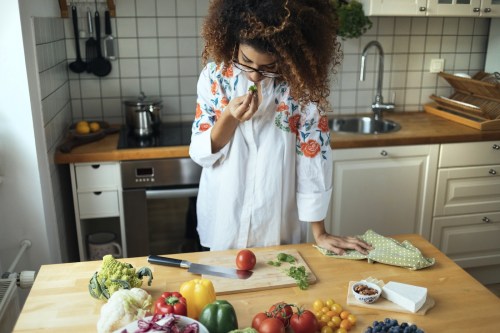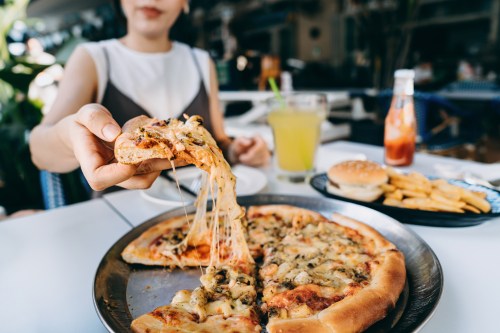When you sit down to enjoy a leafy-green salad, do you know specifically what each of the vividly hued fruits and veggies in the bowl are doing for your body? I know I don’t. The #eattherainbow lifestyle makes for vibrant sandwiches and top-notch crudité platters, but it does spark the question: What vitamins and minerals are actually packed into each section of ROYGBIV?
Experts in This Article
functional medicine doctor and author of Young Forever
In a recent Instagram post, functional medicine doctor Mark Hyman, MD, breaks down exactly how to interpret your red apples, orange carrots, yellow pineapples, and so on. “Vegetables and fruits use their colors to signal which beneficial substances they contain,” he wrote in the caption. “Color is the language of the plant kingdom, so be sure to incorporate an array of colorful plant foods into your diet!”
Once you know which shades pack which nutritional gains, munching on an aesthetically pleasing cornucopia of colors will be all the more satisfying. You may find yourself saying things at brunch like, “Oh, this avocado? Yes, it’s yellow-greenness means it loaded with carotenoids, lutein, and zeaxanthin—all of which are believed to reduce the risk of cataracts!” (But, you know, in a cooler way.)
Below, Dr. Hyman breaks down how to interpret the visible light spectrum…in produce staples.
Keep reading for your ROYGBIV nutritional breakdown.
Red (tomatoes, grapefruit, watermelon): You’ve heard of pesky free radicals—unstable atoms or molecules that lack an electron pair? They can destroy collagen and DNA, and attack the elastin fibers that keep your skin firm. While they’re clearly not your friends, red foods are here to the rescue. According to Dr. Hyman, they contain the carotenoid lycopene, which help “rid the body of free radicals,” he says.
Orange (carrots, mangoes, apricots, cantaloupes, pumpkin, acorn squash, winter squash, sweet potatoes): “These contain alpha-carotene, which protects against cancer. They also contain beta-carotene, which the body converts to vitamin A,” writes Dr. Hyman.
Orange/Yellow (pineapple, orange juice, oranges, tangerines, peaches, papayas, nectarines): This array of naturally sweet fruits available in your local produce aisle contains beta cryptothanxin, which helps all of your cells talk to one another.
Yellow/Green (spinach, collard greens, mustard greens, turnip greens, yellow corn, green peas, avocado, honeydew melon): As previously mentioned, the yellow-green tint means these staples contain carotenoids, lutein, and zeaxanthin, all of which are believed to reduce the macular degeneration that comes with aging.
White/Green (leeks, scallions, garlic, onions, celery, peas, white wine (!), endives, chives: Some of the foods rocking this earthy tone contain antioxidant flavonoids like quercetin and kaempferol, which defend your cells from damage. Plus, Dr. Hyman adds: “The onion family contains allicin, which has anti-tumor properties.”
Green (broccoli, Brussels sprouts, cabbage, bok choy, kale): “These contain the chemicals sulforaphane and isocyanate and they also contain indoles,” writes the doctor, “all of which help ward of cancer by inhibiting carcinogens.”
Red/Purple (beets, eggplant, purple grapes, prunes, cranberries, blueberries, blackberries, strawberries, red apples): I’ve got two words for you here: heart health. According to Dr. Hyman, the antioxidants (known as anthocyanins) in these fruits and veggies protect your heart health by preventing blood clots. Some might say, they can’t be beet. (Had to.)
Want an extra veggie challenge? Try eating 20 in a week or pack a delish rainbow sandwich for lunch.
Sign Up for Our Daily Newsletter
Get all the latest in wellness, trends, food, fitness, beauty, and more delivered right to your inbox.
Got it, you've been added to our email list.










